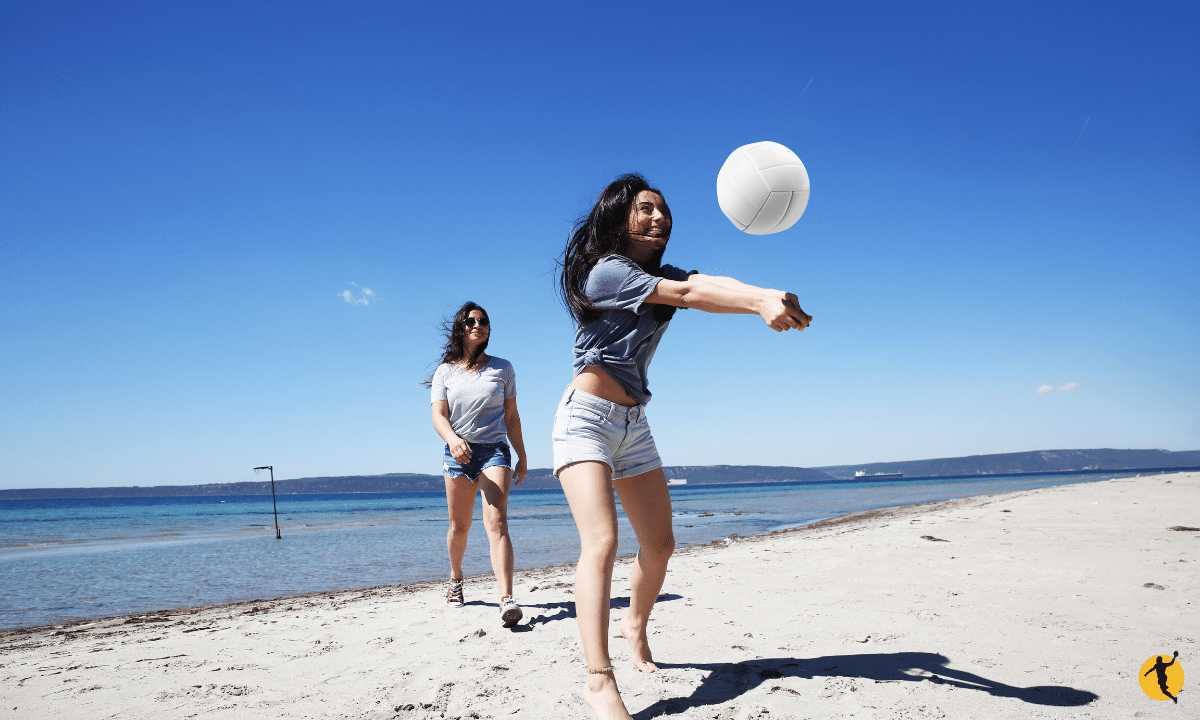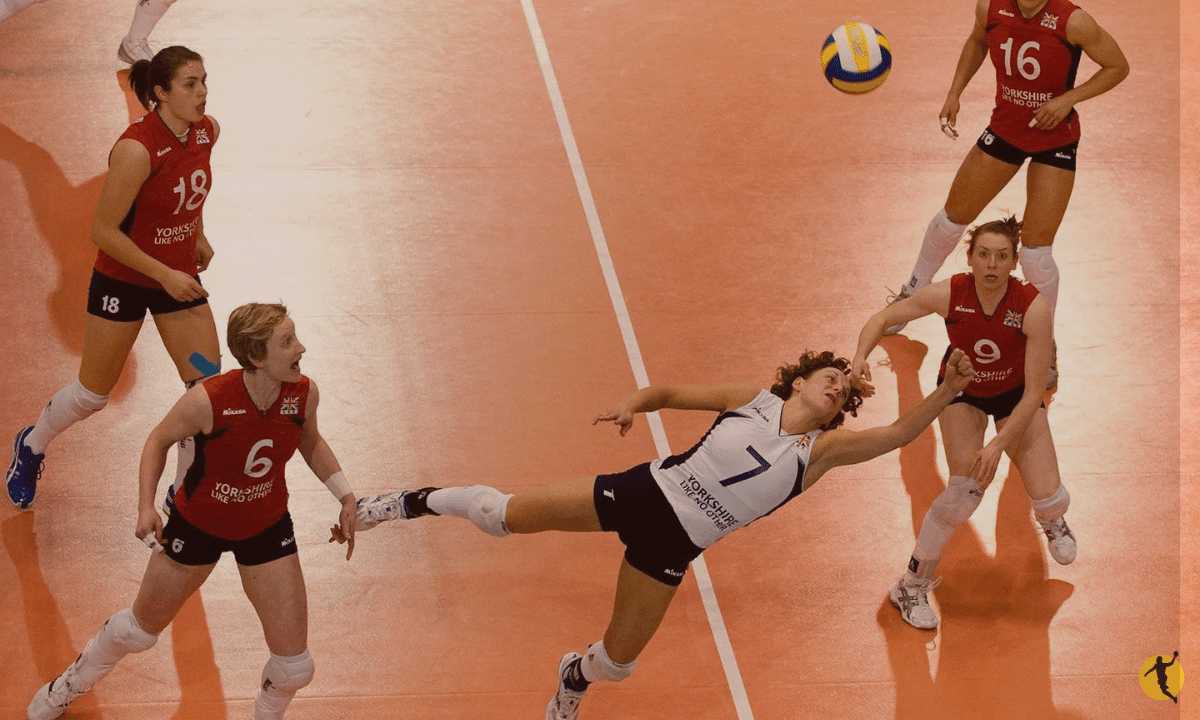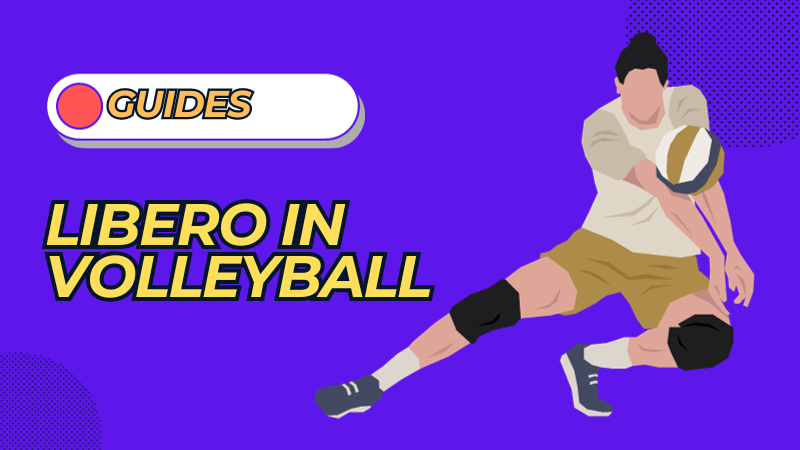If you’ve ever watched a volleyball game, you might have noticed a player wearing a different color jersey, dashing across the back row with agility and precision. That’s the libero, a unique and often misunderstood position in volleyball. Introduced to the game in 1999, the libero has transformed defensive plays, sparking intrigue and some confusion among fans.
The role of the libero in volleyball is crucial, yet it remains a mystery to many. The libero’s responsibilities can be complex, from being restricted to play in the back row to having specific rules about attacking the ball. As someone who’s followed volleyball closely, I’ve seen many need clarification on what this position entails.
Do you ever wonder why liberos wear a different color jersey or what makes them defensive specialists? Let’s delve into the fascinating world of the libero, where agility meets strategy, and uncover the qualities and rules that define this essential position in volleyball.
What Is a Libero in Volleyball?
The libero in volleyball is a defensive specialist position exclusive to indoor volleyball. A libero focuses on service reception and defense, always remaining in the game without being limited by regular rotation rules. The role was introduced in 1999 to increase digs and rallies, making the sport more thrilling and dynamic.
Diving deeper, the libero’s uniqueness is manifested through its distinct responsibilities and characteristics. Unlike other positions, the libero never rotates to the front row and usually replaces the middle blocker position when that player moves to the back row. This flexibility allows the libero to enhance the team’s defense without disrupting the offensive strategy.
Being a libero is not just about following special rules; it requires unique skills like good passing ability, quick reaction time, and consistency. This position often wears a different color jersey to stand out, symbolizing its exceptional place within the team.
From college volleyball to professional games, the libero’s presence has reshaped defensive play, making it one of the essential roles on the volleyball court. Whether you’re a coach, a teammate, or just an avid viewer, understanding the libero’s role can provide a fresh perspective on the exciting game of volleyball.
What Does a Libero Do in Volleyball?

A libero’s role in volleyball is multifaceted and requires precision, agility, and intelligence. Primarily, the libero focuses on playing in the service reception and defense. Unlike other positions, the libero always stays in the back row, ready to dig out hard-driven hits from opponents.
- Service Reception: The libero often takes responsibility for receiving the opponent’s serve. The player’s exceptional ability to pass the ball accurately to the setter allows for a strong offensive response. As someone who’s played the game, I can tell you that the libero’s role in service reception is vital in ensuring the play starts on the right foot.
- Defense: In defense, the libero shines with a remarkable capacity for digging the ball. These players can dive, roll, and leap to keep the ball in play, showcasing their good digging ability. This skill and quickness allow the libero to cover vast areas of the backcourt, acting as the last line of defense.
- Substitution Flexibility: A unique attribute of the libero is the ability to substitute freely with back-row players, particularly the middle blockers. The libero cannot attack the ball above the net’s height or set the ball inside the 3m line for an attack. This rule ensures that the libero’s role remains focused on defense.
- Wearing a Different Color Jersey: To easily identify the libero among teammates, the player wears a different color jersey. This highlights the unique position and importance of the libero in the game, whether in men’s or women’s volleyball.
- Enhancing the Game: The introduction of the libero has dramatically increased the length of rallies and enhanced the game’s entertainment value. With an average height of around 6’2″ for men’s national teams, the libero may not be the tallest player, but the quickness and consistency make the position indispensable.
In summary, the libero in volleyball embodies the spirit of teamwork, agility, and strategic thinking. They play a pivotal role in shaping the game’s flow and often make those breathtaking saves that leave spectators in awe. It’s a position that requires a distinct blend of skills and a deep understanding of the game’s dynamics, making it one of the most fascinating aspects of volleyball.
Characteristics of a Libero
Building on the foundational understanding of what a libero is, we delve into the characteristics that make this role unique and vital on the volleyball court. Whether it’s agility or precision, the libero’s attributes are central to the team’s defense.
Height
Height is not a defining factor for a libero, but it can affect how it is utilized within the team. Unlike positions that require towering height for blocking and spiking, the libero needs mobility and reaction speed. The average height of a libero on the USA men’s national volleyball team is around 6’2″, demonstrating that the position’s requirements are more focused on skill rather than stature.
Speed & Reactivity
A libero’s effectiveness lies in their ability to react swiftly and move rapidly across the court. Quick, nimble feet and incredible reaction time are key traits for this position. Drills that push reaction time to the edge, such as side-to-side shuffles or carioca drills, are commonly used to hone these skills.
The addition of the libero to volleyball is credited with increasing the length of rallies, and the quick and consistent response of the libero is a major contributor to this exciting aspect of the game.
Why Do Teams Use a Libero?

The introduction of the libero position in volleyball was a game-changer that revitalized defensive strategies and added excitement to the sport. But what exactly makes the libero so essential to modern volleyball teams?
The libero is often considered the heart of the team’s defense, specializing in receiving serves and playing in the back row. Unlike other positions, the libero always remains in the game and isn’t limited by regular rotation rules. Their unique defensive skills allow for more digs and rallies, extending play and making games more thrilling for spectators.
Moreover, the libero’s role as the team’s best passer allows them to stabilize the team during crucial moments, ensuring that the ball is properly set up for the attackers. This consistency in passing is vital to maintaining offensive pressure.
Another factor favoring the libero is their specialization in defense, allowing them to excel in areas like digging and passing, where height might be a minor advantage. This specialization leads to longer rallies and a more dynamic game, appealing to players and fans.
In essence, the addition of the libero to volleyball has increased the length of rallies and added depth and strategic complexity to the game. While teams are not required to use a libero, those that do harness these advantages make the position highly valued in contemporary volleyball.
Is Libero a Good Position in Volleyball?
The libero position in volleyball is good and essential for many teams. As a specialized role focusing solely on defense, the libero brings unique attributes to the court that can shape the game’s dynamics.
- Specialization in Defense: The libero’s main responsibilities lie in service reception and defense. They’re often tasked with receiving powerful serves and making digs, demanding exceptional ball-handling skills. Their ability to keep the ball in play and set up opportunities for offense makes them a pivotal part of the team’s success.
- More Playing Time: Since the libero doesn’t rotate to the front row and is continually in the game, they generally get more playing time than other players. This consistent presence allows them to hone their skills and contribute significantly throughout the match.
- Adaptability and Versatility: Though shorter than other players, liberos make up for it with their agility, quickness, and intelligence on the court. They must anticipate the ball’s trajectory and opponents’ intentions, adapting rapidly to various situations.
- Impact on Team Dynamics: The libero’s role isn’t glamorous, and they often operate behind the scenes, making key saves and passes. However, their consistent performance can stabilize the team, allowing attackers to focus on scoring points.
- An Attractive Option for Different Player Types: The libero position allows players who might not have the height for front-row play to shine in the back row. Their unique skill set enables them to contribute to the team’s overall performance.
In summary, the libero position in volleyball is highly valued for its specialized focus on defense, adaptability, and unique impact on team dynamics. Whether an individual finds it a “good” position may depend on personal preferences and skills, but its importance in modern volleyball is unquestionable.
Is Libero a Good Position in Volleyball?
Certainly, the libero is often considered a crucial position in volleyball, especially for teams that value strong defense. This unique role allows a player to specialize in back-row play, focusing on passing and digging, which can elevate the team’s overall defensive performance.
Also, Read: When Does Volleyball Season Start? Full Guide
Who Can a Volleyball Libero Replace?
The libero can replace any back-row player to provide additional defensive coverage without counting as a substitution. This is key in maintaining a team’s defensive resilience, allowing them to handle hard-driven hits and challenging serves from opponents.
The libero position was created to add a new dimension to the game of volleyball, enhancing both the excitement and strategy of play. With the ability to freely enter and exit the court, replacing any back-row player, the libero adds flexibility and quickness to the team’s defense.
While the libero cannot attack the ball at the top of the net or serve in every rotation, they play a significant role in keeping rallies alive and setting up offensive opportunities.
The libero is essential to modern volleyball by providing a strong defensive specialist position. Whether in school volleyball, club volleyball, or professional volleyball, the role of the libero has become central to the sport, reinforcing the importance of defense and team coordination.
Can the Libero Serve?

Yes and No. Under the international regulations governed by FIVB, liberos are unable to serve. However, liberos can serve in one rotational position in USA Volleyball (USAV) and NCAA competitions. This rule variation emphasizes the unique role that the libero plays within different governing bodies and levels of play.
Also, Read: What Is a Kill in Volleyball: An In-Depth Definition
Why Are Liberos Not Allowed to Serve?
When the libero position was first invented, it was banned from serving in volleyball because it was created purely for defense. The original intention behind the libero’s introduction was to provide a specialized defensive role without affecting the offensive dynamics of the game.
This restriction helped underline the libero’s defensive specialist nature, setting it apart from other positions in the sport. While some leagues like USAV and NCAA have since adapted the rules to allow the libero to serve in one rotation, the restriction still holds in many international competitions under FIVB rules.
The differing regulations concerning the libero’s ability to serve illustrate the evolving nature of the sport and the specific focus of the libero’s role. While the libero is an essential asset in defensive play, the libero’s decision to allow or disallow serving continues to shape the strategies and dynamics of the game across different levels of volleyball.
Is Libero the Hardest Position?
Labeling the libero as the “hardest” position in volleyball can be subjective, as it often depends on the context, the team’s strategy, and individual preferences. However, it’s undeniable that the libero position comes with unique challenges and demands that make it stand out.
- Defensive Mastery: The libero is primarily a defensive specialist tasked with receiving serves and digging hard-driven hits. This role requires excellent reflexes, agility, and the ability to read the game quickly.
- Positioning and Movement: Playing as a libero requires being in the right place at the right time. Quick footwork and a deep understanding of positioning are crucial. The libero must be able to move swiftly across the backcourt, anticipating where the ball will land.
- Ball Handling and Passing Skills: The libero must handle the ball, delivering precise and controlled passes to the setter. Consistency in this area is key, as any mistake can lead to losing a point.
- Mental Toughness: Being the primary defensive player, a libero often faces powerful attacks from opponents. Staying focused, resilient, and maintaining a positive attitude, even after a missed play, is vital for success in this position.
- Height Limitations: Unlike other positions where height can be an advantage, the libero often has to compensate for being one of the shorter players on the team. This demands a higher level of skill and finesse in performing their role.
- Rotation Rules: The libero must adhere to specific substitution and rotation rules, making this position more complex. Understanding and executing these rules flawlessly adds another layer to the position’s difficulty.
While these factors contribute to the complexity of the libero position, the “difficulty” or “hardness” of playing libero can vary from player to player. Some may find the position challenging and exciting, while others might prefer the demands of other roles on the court. The combination of these unique responsibilities and skills makes the libero position both challenging and essential in the game of volleyball.
Also, Read: How Many Players Are on a Volleyball Court?
Conclusion
In the fast-paced world of volleyball, the libero position stands out as unique and demanding. With a primary focus on defense, the libero must possess reflexes, agility, and excellent ball-handling skills. The ability to read the game and move quickly across the backcourt is paramount, as is mental toughness in facing powerful attacks.
The libero’s role isn’t just about skill and physical prowess; understanding complex rotation rules adds another layer to the position’s challenge. While the hardness of playing libero can be subjective, there’s no denying that it requires a blend of physical skill and mental acumen. This combination of unique responsibilities solidifies the libero’s role as challenging and essential in shaping a successful volleyball team.
FAQs
What Does the Libero Do?
The primary role of a libero in volleyball is playing in service reception and defense. The libero focuses on receiving serves and making digs, contributing significantly to the team’s defensive play.
Can a Libero Spike in Volleyball?
According to the main rules, liberos cannot attack above the net’s height. They must remain focused on defense and cannot spike the ball over the net.
Is Libero a Good Position in Volleyball?
Yes, being a libero is good because it allows players to specialize in defense and play a vital role on their team. It also provides players more playing time than average, enhancing their skill and contributing to the overall team strategy.
Can a Libero Hit the Ball?
According to the main rules, liberos cannot attack above the net’s height. Their primary role is in defensive plays such as digs and passes, not in offensive attacks like spiking.
Are Liberos Allowed to Serve?
Yes and No. No, under FIVB regulations, liberos are unable to serve. Yes, under USAV and NCAA rules, liberos may serve in one specific rotational position, adding a layer of complexity and strategy to the game.
What Are Three Things a Libero Cannot Do?
A libero cannot serve (with some exceptions, as mentioned above), attack above the net’s height, or block. These limitations are in place to ensure that the libero’s role stays focused on defense, and they contribute to the unique nature of this vital position in volleyball.

